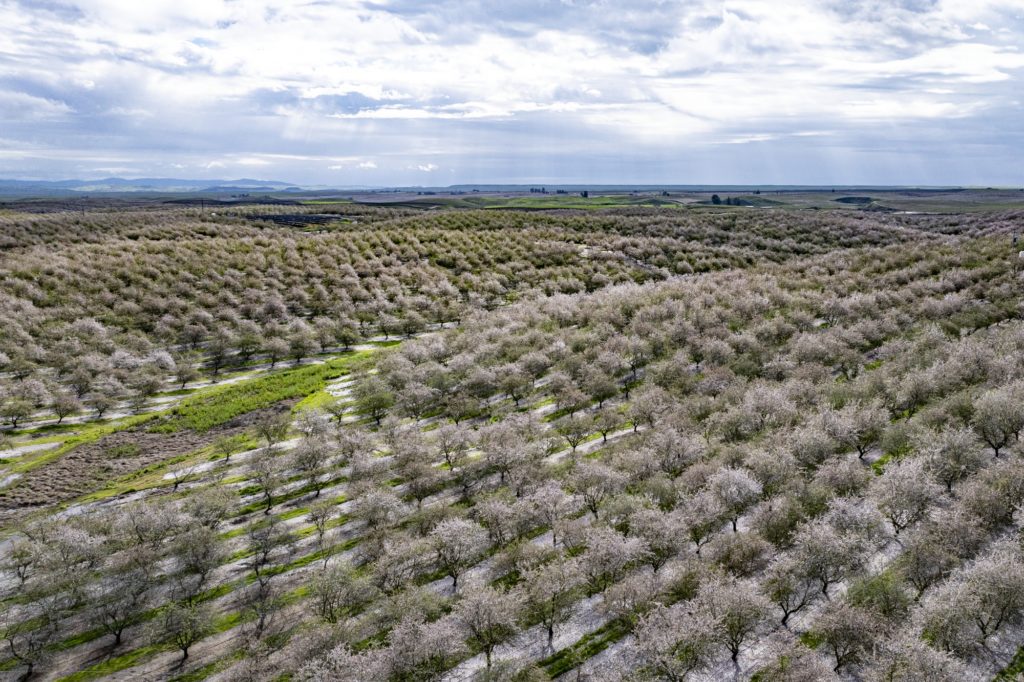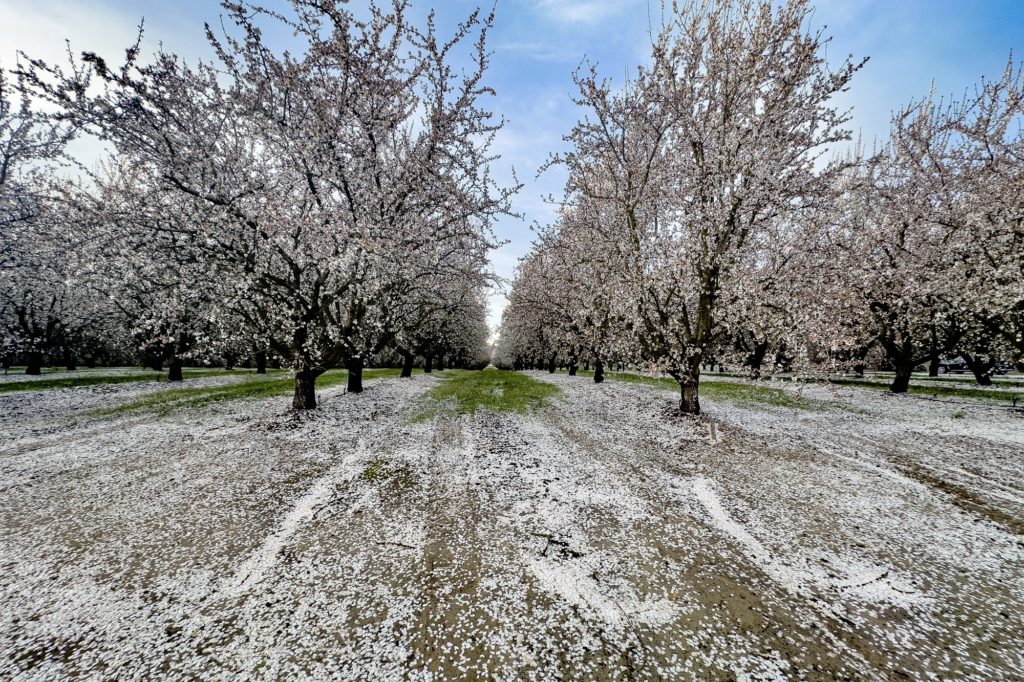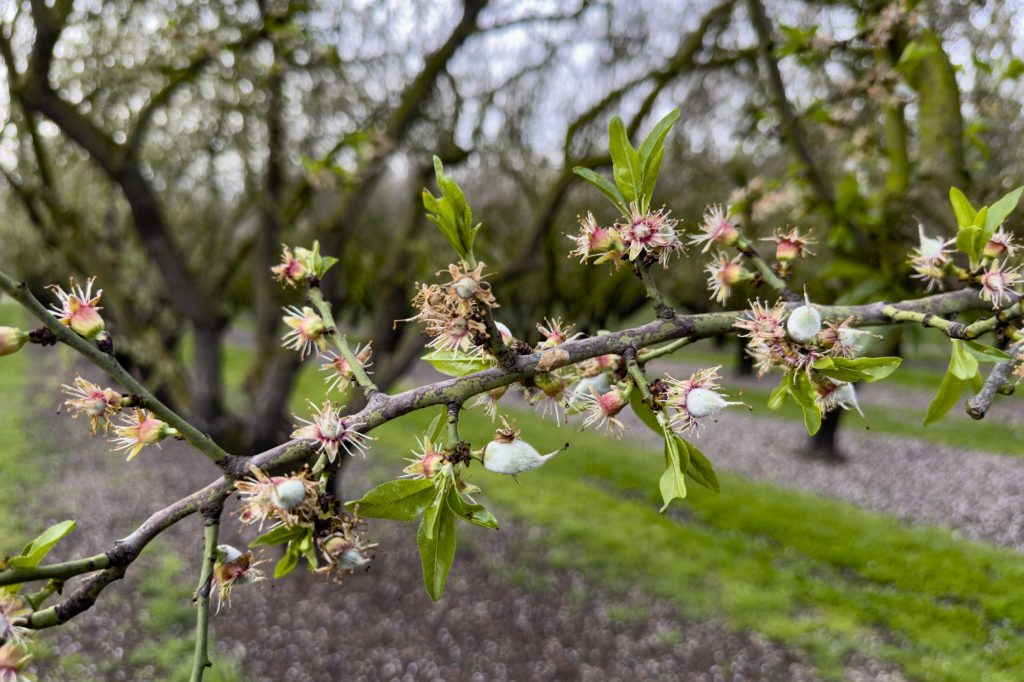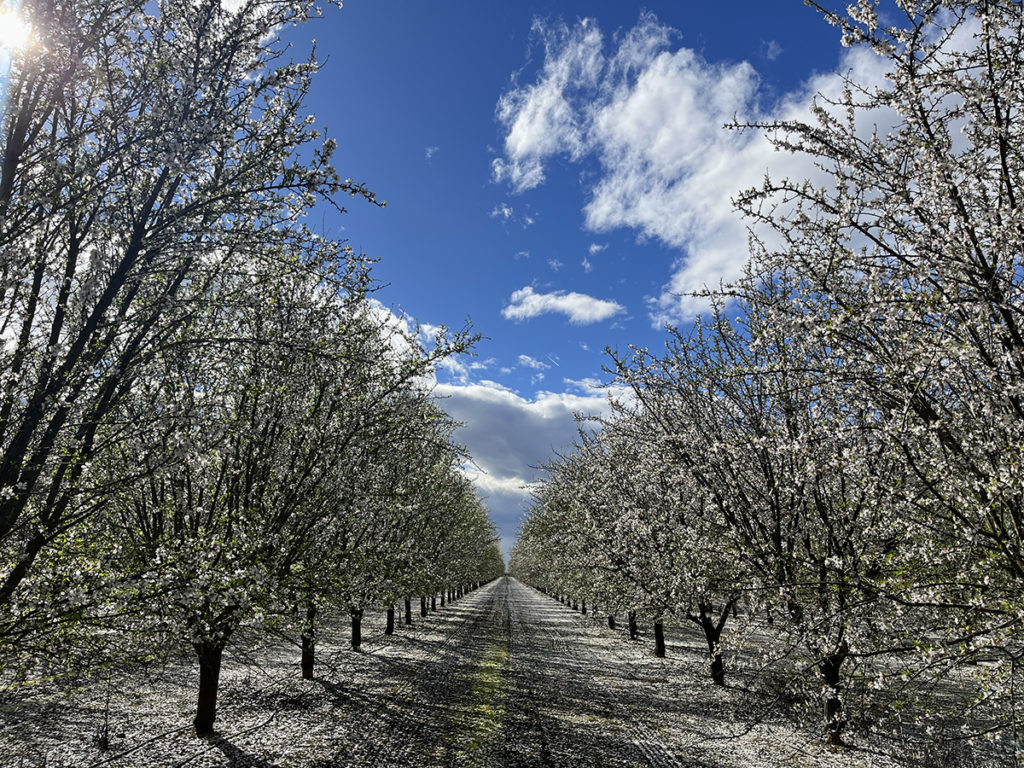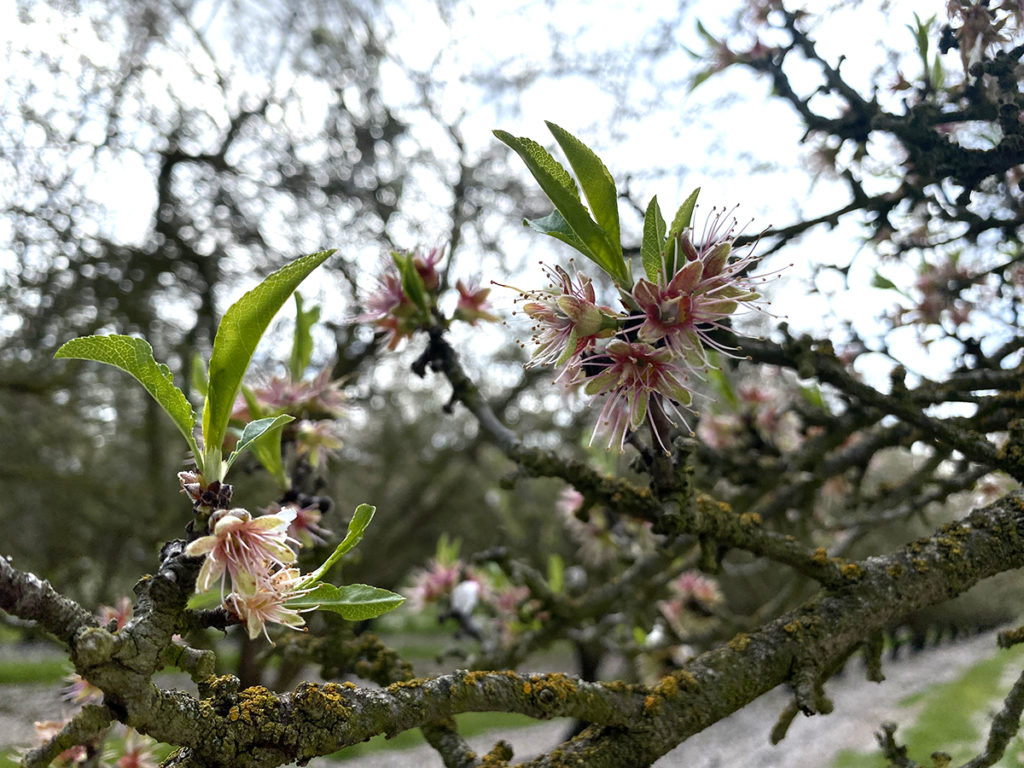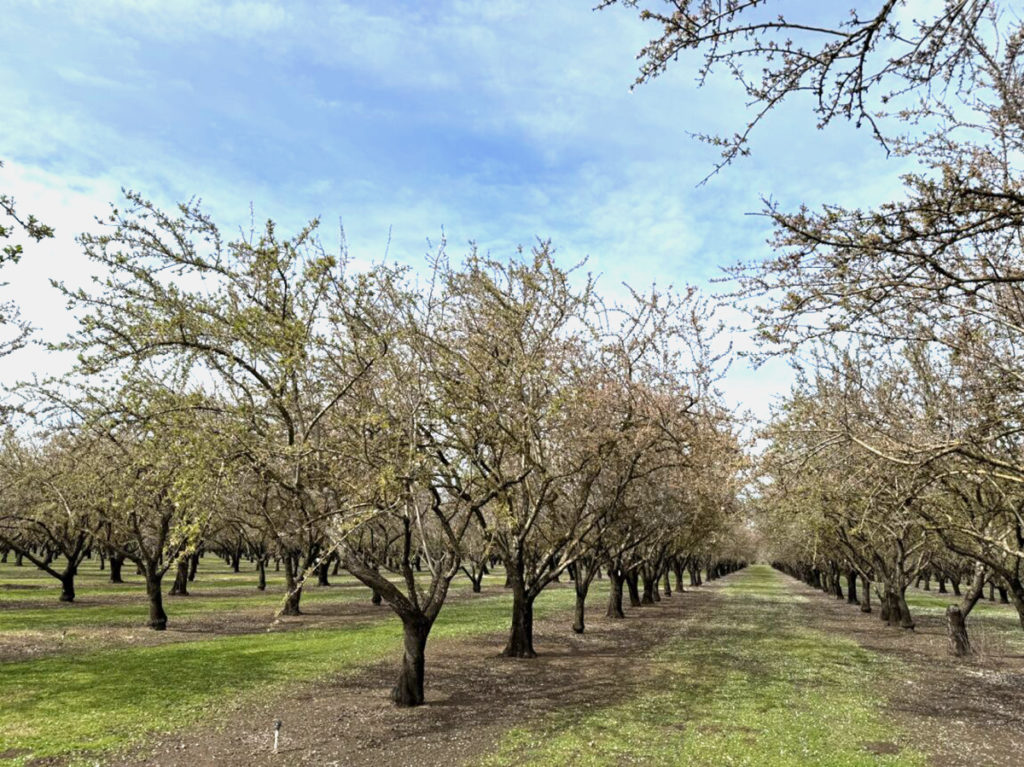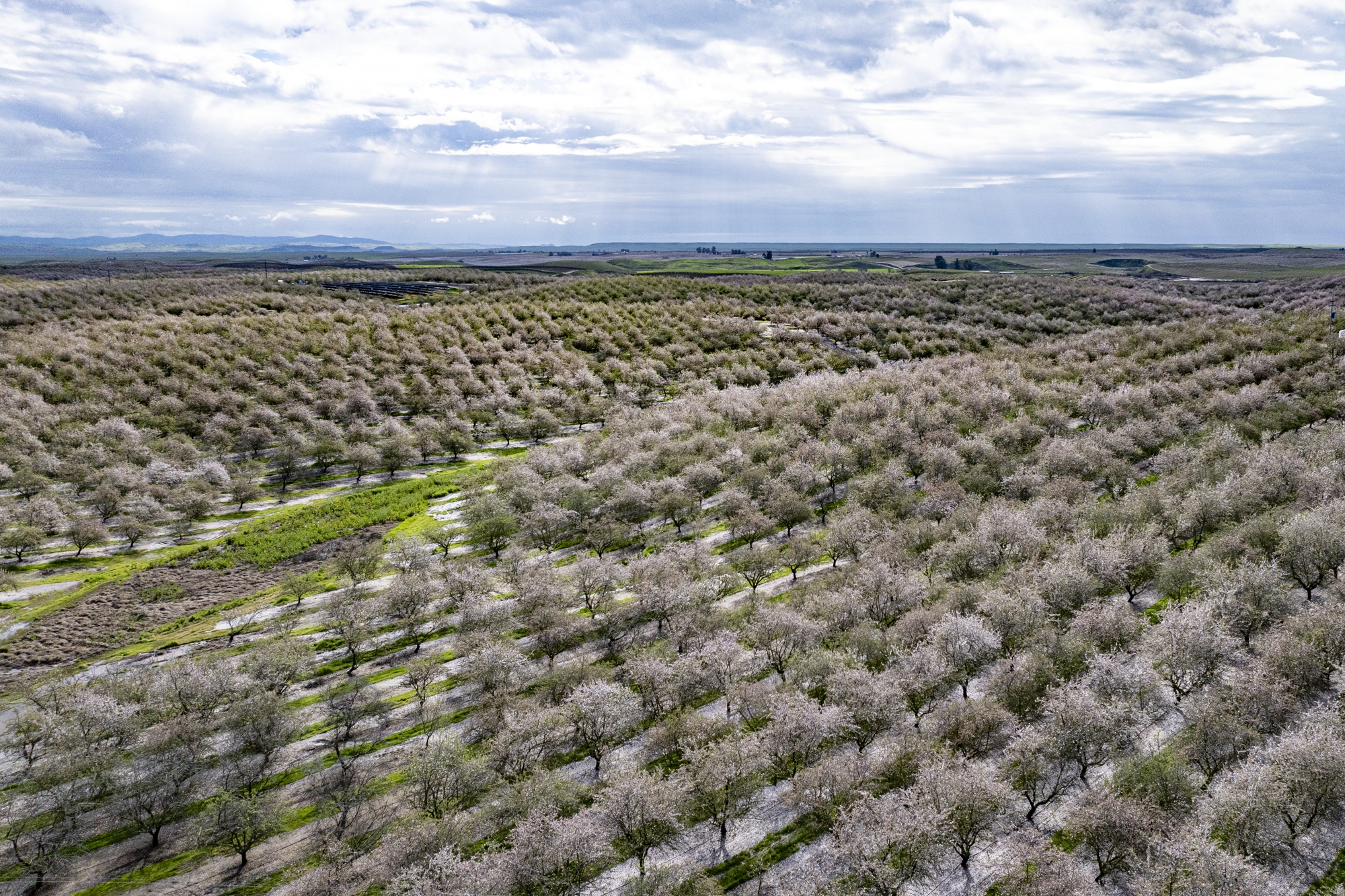
This report covers the conditions and activities observed from March 1, 2024 to March 7, 2024. Written updates will be posted regularly on Fridays throughout bloom and will have a more regionalized focus. Additional updates will be posted as needed.
Multiple weather events, as well as some clear, sunny days impacted the almond growing regions of California this past week. In the Sacramento Valley, multiple days of rain and heavy wind slowed the progress of the bloom. Early morning lows in the mid-thirties were recorded in some areas. These cool temperatures and overcast skies significantly limited morning bee activity, following a week of much better pollenating conditions. In the Central and South San Joaquin Valley, conditions were markedly better, especially as the week progressed. The week started with showers and some strong winds, as well as reports of localized hail, a few funnel clouds, and even two tornados that touched down in Kings and Madera counties. However, after the early weather system dissipated, the rest of the week saw cool mornings give way to mild afternoons where bees were very active in what bloom they could still find. As the week wrapped up another system moved into the South Valley, but no significant rain or wind was reported.
In a sentiment shared by many growers around the San Joaquin Valley, Garrett Gilcrease who farms in Kings County said “Just as in the previous week, bee flight hours and bloom conditions are about as good as you can get. Outside of some wind and cool morning/nighttime hours, I don’t know if you can get much better pollination conditions. What sticks remains to be seen but it looks good thus far. Weather seems to be good throughout the forecast as well, so fungal potential is subsiding but true bug issues are now a concern as we enter into warmer weather.”
Butte and Padre plantings saw peak bloom in the Central Valley at the end of the previous week, and are now well into petal fall and jacket stages. The Sacramento and South San Joaquin Valley regions are trailing slightly behind, experiencing peak bloom earlier this week, with petal fall well underway with significant measurable jacket stage observed. Sonora, Nonpareil, Monterey, and California varieties in all regions had already peaked previously and are now fully into later stages of petal fall and jacket. Independence and other self-fertile varieties followed very closely behind. Most orchards are now pushing leaves to some degree, and outside of Butte and Padre plantings, showing little sign of any significant bloom presence left.
With bloom and pollination nearing completion for this season, some bees are already being moved out of orchards. Growers continued maintenance activities in orchards when weather permitted, including mowing and removing downed trees. Focus at this time is beginning to shift to post bloom fungal treatments, nutrient applications, and pest management discussions.
By: Anthony Scudder, Member Relations Regional Manager
Photos By: Mel Machado, Anthony Scudder, Christine Ivory, Kenneth Miyamoto

